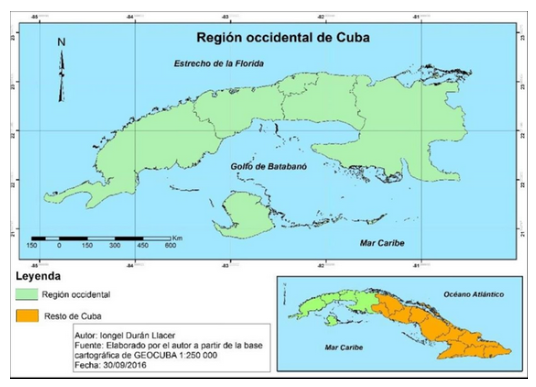Application of change detection methods with SAR images in coastal floodin
Main Article Content
Abstract
The most severe coastal flooding recorded in Cuba was caused by the passage of hurricanes. The implementation of ocean models for flood analysis can introduce errors in the forecasts; Some of these errors are the result of the scarcity of data coming from the ocean, in the same way it is subjected to the atmospheric forcing of the winds and heat transfer, therefore; errors that occur in the weather forecast models will cause errors in the associated ocean models. In addition, the detection of flooded areas is carried out through reports made by the affected localities, as well as the analysis of their extension through expeditions, which is unfavorable due to the existence of inaccessible areas. Therefore, it is necessary to implement SAR technology to identify flooded areas.
The implementation of change detection methods, based on amplitude (ACD), and interferometric coherence (CCD), from SAR images; using a specialized software to map coastal floods and analyze their extent. The extension of the coastal flooding obtained with both methods showed excellent results; despite its limitations to achieve a better analysis.
Downloads
Article Details

This work is licensed under a Creative Commons Attribution-NonCommercial 4.0 International License.
Those authors who have publications with this journal accept the following terms of the License Attribution-NonCommercial 4.0 International (CC BY-NC 4.0):
You are free to:
- Share — copy and redistribute the material in any medium or format
- Adapt — remix, transform, and build upon the material
The licensor cannot revoke these freedoms as long as you follow the license terms.
Under the following terms:
- Attribution — You must give appropriate credit, provide a link to the license, and indicate if changes were made. You may do so in any reasonable manner, but not in any way that suggests the licensor endorses you or your use.
- NonCommercial — You may not use the material for commercial purposes.
- No additional restrictions — You may not apply legal terms or technological measures that legally restrict others from doing anything the license permits.
The journal is not responsible for the opinions and concepts expressed in the works, they are the sole responsibility of the authors. The Editor, with the assistance of the Editorial Committee, reserves the right to suggest or request advisable or necessary modifications. They are accepted to publish original scientific papers, research results of interest that have not been published or sent to another journal for the same purpose.
The mention of trademarks of equipment, instruments or specific materials is for identification purposes, and there is no promotional commitment in relation to them, neither by the authors nor by the publisher.

